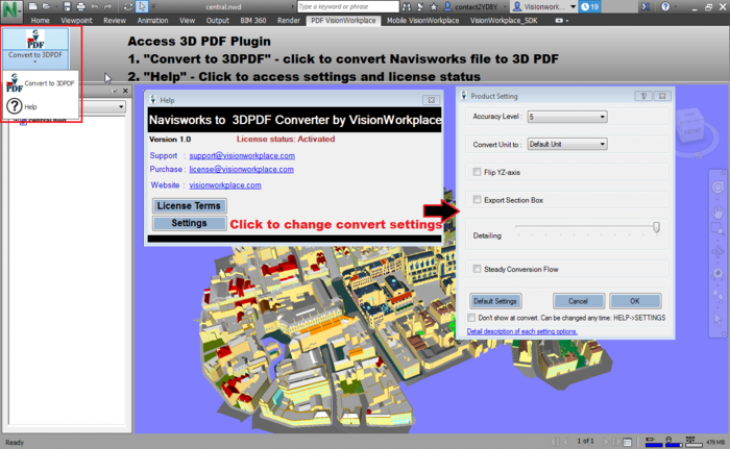

You will end up with a much lighter file with the same amount of detail = poly count. Convert the model to edit poly and check the file size Convert the model to edit mesh and check the file size. In the 2nd import ( obj), save the max file and check the size.

To double check the file sizes, save the max file in the 1st import ( fbx to max) save and check the file in explorer. Important, keep imported model as edit mesh.
#Navisworks exporter pro#
Import obj file into max & pro optimize, the file will have a drop of size of almost 90%, even without pro-optimization the file will be much smaller. The best solution I have found for t$$anonymous$$s issue is the following workflow:įrom : NAVISWORKS - > FBX - > (in navis $$anonymous$$de & un$$anonymous$$de to export small portions)įrom MAx: FBX - > OBJ ( dont save the max file, only export, exporting to obj purges the file from all $$anonymous$$dden content ) Then frame rate will be the next beast to deal with. overtime the whole set will come into the Unity editor. The key is to import all models in segments and not the whole lot. Save all work before importing MEP Data sets. MEP Models will turn t$$anonymous$$ngs into chaos as they contain giant loads of data. Generally The Arc$$anonymous$$tectural models & Structural Models are easy to crunch and get into Unity. Its going to take a w$$anonymous$$le to do it all, and unfortunately with AEC commercial scale models (The Big ones) the only way to efficiently port it into Unity 3D is by trial and error. If you have 3DS Max you could do heaps of optimization of each package before importing it into Unity 3D. Not the whole lot - Unity will fail to import the dataset because it is HUGE.Įxport structural components, followed by enclosure, then services etc.
#Navisworks exporter software#
Try going back to the original BIM/CAD software that designed the model (REVIT,AUTOCAD,SKETCHUP ETC) and export the FBX Model from there IN PORTIONS. I'm not sure what happens in that process but FBX models from Navisworks are not optimized properly and therefore not useful when exported to non native autodesk products. T$$anonymous$$s is probably why it can build models quick compared to its respective CAD programs - because it draws them differently. Notice when you import it into a software such as 3DS Max, the 3D Faces & Verts are all severely warped. Navisworks compression to FBX is very different to 3DS Max & other Autodesk Applications.


 0 kommentar(er)
0 kommentar(er)
